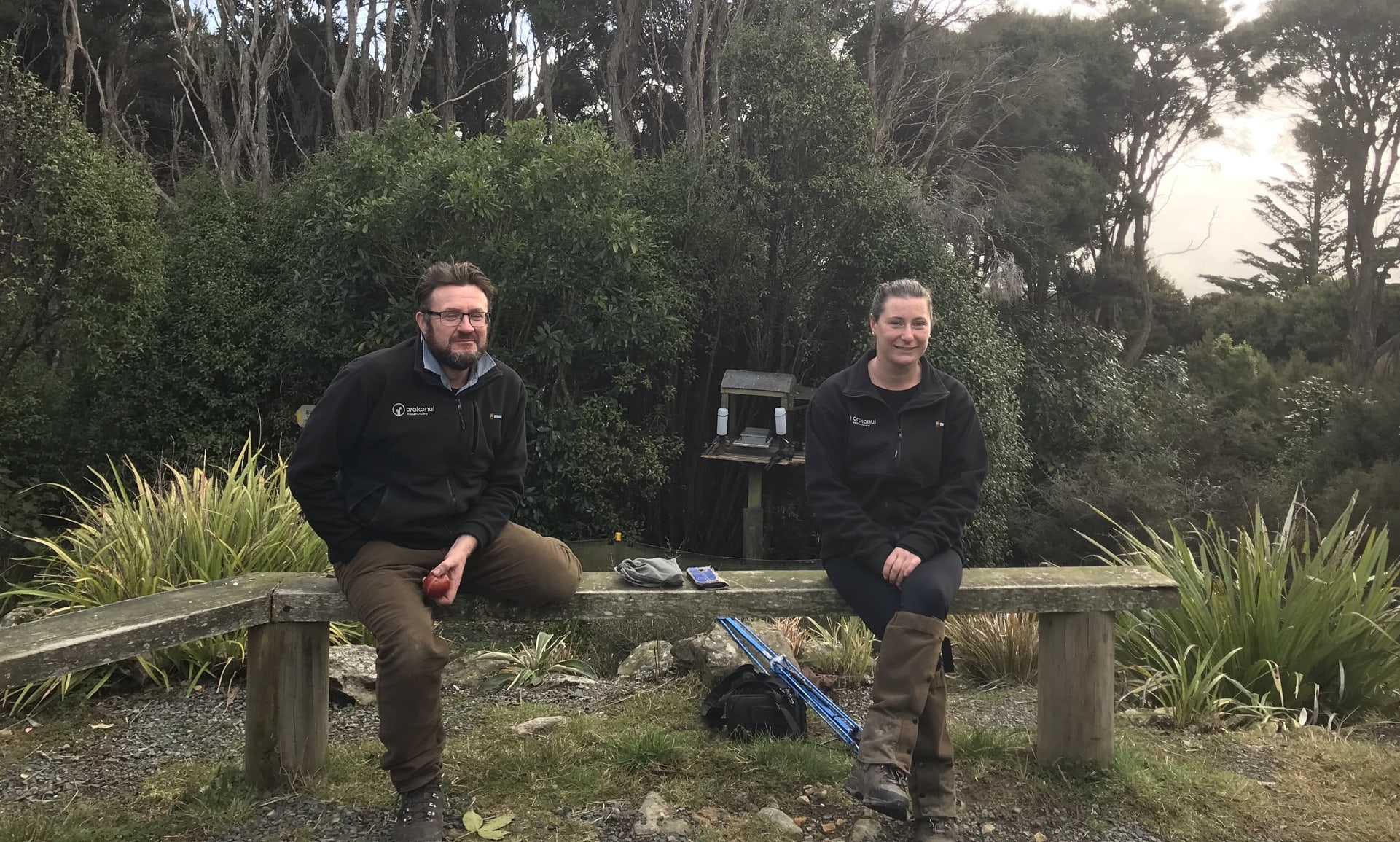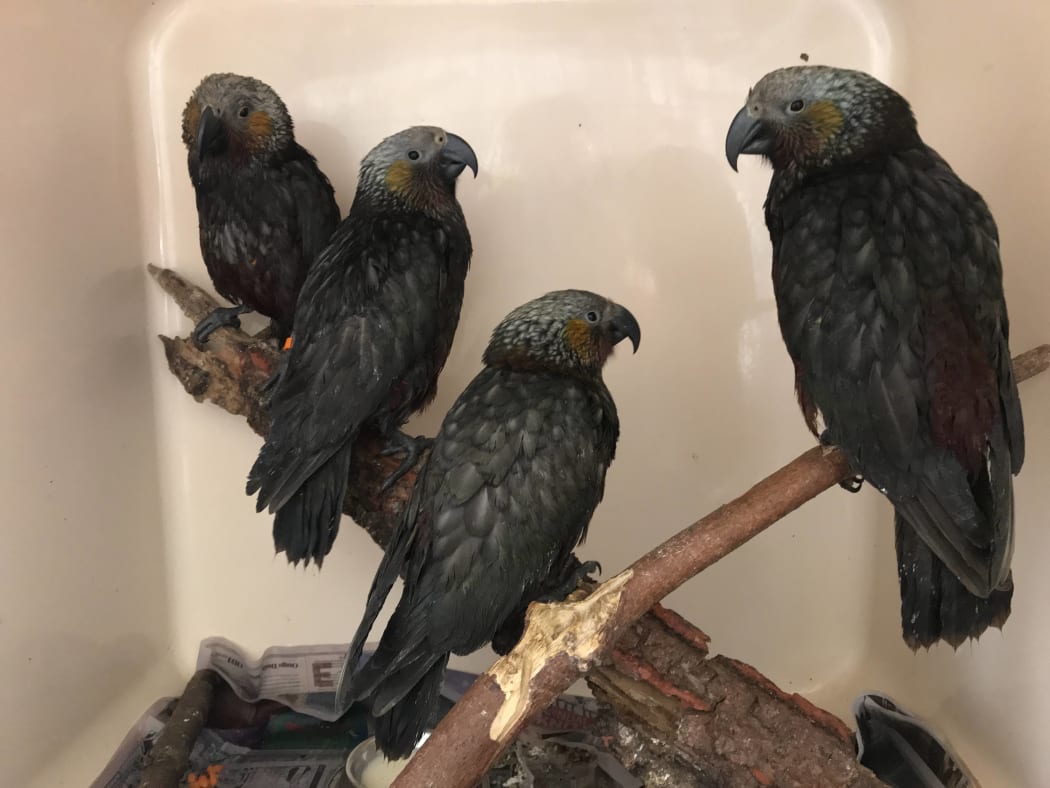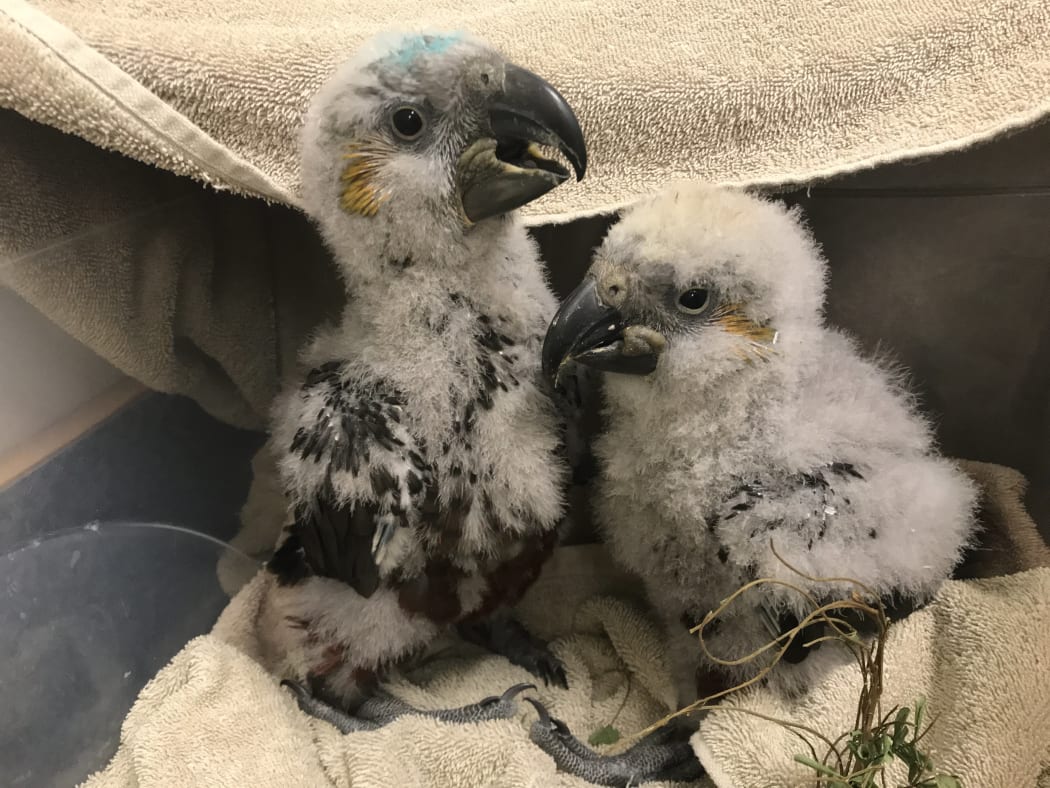The sun filters through trees as tūī and korimako compete for space at the sugar water feeders behind the Orokonui Ecosanctuary aviary. The giant bird cage contains three South Island kākā, waiting to be released, the hopes of many local groups resting on their feathered shoulders.

Elton Smith & Kelly Gough of Orokonui Ecosanctuary Photo: RNZ / Claire Concannon
Follow Our Changing World on Apple Podcasts, Spotify, Stitcher, iHeartRADIO, Google Podcasts, RadioPublic or wherever you listen to your podcasts.
Orokonui Ecosanctuary sits in the hills just north of Dunedin city. Three hundred and seven hectares of land cleared of pests and enclosed with a predator proof fence. It is a safe space for native birds such as South Island robin, tūī, kiwi and korimako, as well as for tuatara, skinks and geckos - watched over by conservation manager Elton Smith and ranger Kelly Gough.
In 2008 six South Island kākā were released into the ecosanctuary, the beginning of a plan to re-establish a population of these birds, long lost to their ancestral Otago home. Different to North Island kākā, their South Island cousins are also found in Ulva, Codfish and Steward Islands, Waitutu and Eglington valley in Fiordland and in Kahurangi national park. The population in Orokonui Ecosanctuary has been growing since that initial release, with 49 birds counted in the latest survey, but it has also suffered some setbacks. One of which was the infamous ‘year of the stoat’, in 2015, when several stoats managed to get inside the fence and raided the sanctuary for a few months before they could be caught and killed.

Juvenile kākā at the Dunedin Wildlife Hospital Photo: Supplied
While supplementary feeding entices them to stay around the ecosanctuary, kākā don’t pay much heed to the $2.2 million predator proof fence that they fly over, and the population has also suffered losses due to ‘deaths by misadventure’ on the outside. But through collaboration with a group of organisations, the team at Orokonui Ecosanctuary are hoping these latest three juvenile birds that have come from the Dunedin Botanic Garden aviary will bolster the numbers, and live safe and happy lives.
The South Island kākā breeding programme at the Dunedin Botanic Garden, in its eleventh year, continues to help kākā parents in their aviary to raise new chicks, to supplement those breeding inside the ecosanctuary. Aviary curator Alisha Sherriff is currently in charge of this programme and works closely with the Dunedin Wildlife Hospital to ensure the birds are kept healthy and well, and fit for release.

Kākā chicks at the Dunedin Wildlife Hospital Photo: Supplied
Alongside this team raising and caring for the birds, there is a wider set of organisations working to ensure the area outside the ecosanctuary is getting safer all the time for these curious parrots. The Halo Project, a delivery partner of Predator Free Dunedin, runs an intensive programme to control possums and stoats in the area surrounding Orokonui.
And, with the help of a Curious Minds funded Participatory Science Platform project called Kei hea ngā kākā - where are the kākā?, ecosanctuary educators such as Taylor Davies-Colley are working with the local families, schools and landowners, asking them to look out for kākā in their area, and to check that their gardens are safe spaces for kākā.
The project's kākā database has 250 community observations recorded, and, alongside GPS tracking work done by University of Otago masters student Scott Forrest, has helped Orokonui to understand more about how often the kākā are outside the ecosanctuary and how far they are going.
With growing numbers, and the release of new juvenile birds into the ecosanctuary, all involved in this project look to the future with hope that, by making this area safe for them, this South Island kākā population will be able to reach a good self-sustaining size.
Want to hear more?
- We've got two previous stories about studying the problem solving abilities of kākā - Smart Kākā and Kākā TV
- As mentioned in the episode, as a result of efforts by Zealandia, and local neighbourhood trapping groups, North Island kākā numbers have grown significantly in Wellington. Listen to this episode about their rise.
- Learn more about the effects of lead on kākā in The Dark Side of Being an Urban Parrot


